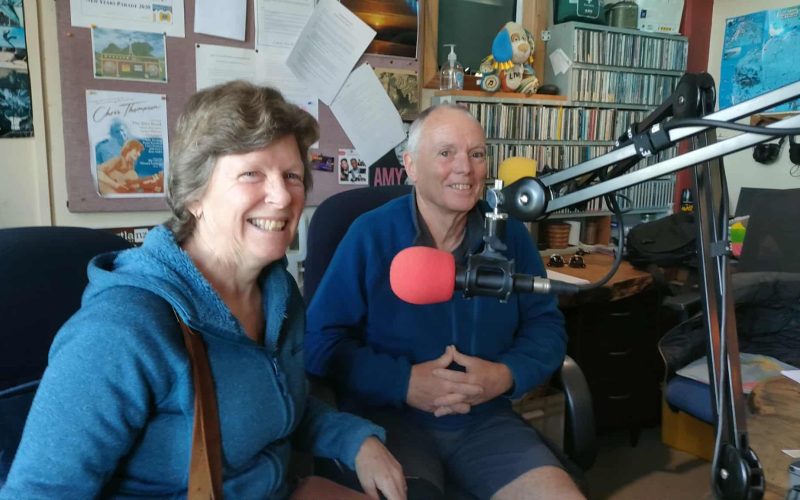This October, voters in the Waikato District will decide more than just who sits around the council table. Alongside electing a mayor, councillors and community board members, residents will face a binding referendum: should Māori wards continue beyond 2028?
For Phil and Jilliene Beale of Raglan, the question is personal. They describe themselves as “average people” who had never been politically active until recently. But the direction of the current coalition government – including the disestablishment of the Māori Health Authority and moves to curtail te reo Māori in schools and government – pushed them to speak out.
“It’s just the unfairness of it all,” Jilliene said. “The government has pushed through so many laws under urgency, and so many of them disempowering Māori and negating years of progress. It feels like Māori are being bashed at every turn.”
Phil, who arrived in New Zealand as a teenager in the 1970s, recalls how little he knew about Te Tiriti o Waitangi until he took a local Treaty education course. “We never learnt anything about it at school,” he said. “It wasn’t until that course that my eyes were opened. Suddenly you realise – this is terrible. Governments have ignored the Treaty time and again.”
The Beales say Māori wards haven’t changed their daily lives but have made a tangible difference for Māori representation. “Not for the majority of Pākehā New Zealanders,” Phil said, “but it has given Māori a guaranteed voice at the table, and that matters.”
The arithmetic of democracy
That arithmetic also drives Raglan resident Tony Mayow, a long-time community organiser and former local government manager.
“Māori make up around 20 percent of the Waikato District’s population,” he said. “Without Māori wards, it’s incredibly difficult for them to win seats in general constituencies. With 13 councillors around the table, and just two of those Māori ward seats, they’re actually under-represented – but at least they’re present.”
Tony is frustrated by persistent misinformation that Māori votes “count more.” “It’s rubbish – a deliberate message pushed by right-wing groups. Māori voters on the Māori roll can only vote once, and their vote carries the same weight as anyone else’s.”
Local democracy versus central government
Both the Beales and Tony emphasise that Waikato District Council had already been through a robust process before adopting Māori wards in 2020. Under Labour’s reforms, councils could establish wards using the same consultation process they use for long-term spending plans and bylaws – no different, no shortcuts.
Waikato consulted its community, considered submissions, debated the issue and then voted to create Māori wards. When that decision was challenged last year, councillors reaffirmed it. For supporters, that was democracy in action. Now, under the coalition government, councils that created Māori wards since 2020 must either hold a binding referendum at the 2025 local elections or disestablish the wards altogether.
Tony sees this as part of a broader pattern of government rollbacks: “Everywhere you turn, there’s another attack on Māori participation – the Treaty Principles Bill, the regulatory standards law, the fast-track legislation. This referendum is another step in the same campaign.”
Tony points out that these attacks affect Pakeha as much as Maori, as the Treaty of Waitangi provides a framework for ongoing protection of the environment, something very dear to Raglan locals’ hearts, as is local democratic decision making.
He asks Pākeha to accept our responsibility to vote for the wards to continue; if we do we will win, and send a clear message that the racial division must stop
Shifting ground: a history of Māori wards
Māori wards were first provided for in 2001 under amendments to the Local Electoral Act. For nearly two decades, any council decision to introduce them could be overturned if just 5 percent of voters demanded a binding poll. That veto mechanism was scrapped in 2021 after repeated petitions sank Māori ward proposals in cities such as New Plymouth, Palmerston North and Whakatāne.
The current government reversed that policy in 2024, reinstating binding referendums. Waikato District is now one of 37 local councils and 5 regional councils, required to put the question to voters in 2025.
The Waikato Regional Council will not be voting. It established Māori wards in 2013 – one of the first councils to do so – and is exempt under government rules that only apply to more recent adoptions.
Living with the legacies of land and Treaty
For many in Raglan, the debate over Māori wards sits alongside deeper historical memories. Both the Beales and Tony recall the long-running conflict over the Raglan golf course, where land was taken during World War II for an airfield and later converted into a golf course instead of being returned to mana whenua. The campaign led by the late Eva Rickard became a defining moment in New Zealand’s land rights movement.
“I grew up hearing Eva described as if she was some kind of villain,” Phil said. “Then you learn the truth – the land was taken in living memory, not the distant past. It changes your perspective.”
For Tony, decades of work alongside Māori communities – from West Auckland to his current role on the governance board of the Papahua Holiday Park, which sits on Māori land – have reinforced his conviction that partnership works. “Real-life co-governance is about negotiation, generosity and trust,” he said. “It works. And it reflects exactly what the Treaty intended.”
Division as a political weapon
Despite those lived experiences, the issue has become deeply polarising. The Beales admit they avoid heated arguments with friends or family who oppose Māori wards. “It can cause a rift in a family, and I’d rather maintain the friendship,” Phil said. Jilliene is blunter: “I’d end up thumping the table.”
Tony notes that online spaces, in particular, have become hotbeds of racist misinformation. He volunteers with Tauiwi Tautoko, a group that counters racist Facebook comments by engaging with posters on shared values rather than confrontation. “It’s hard work, but communication is the only thing we’ve got,” he said.
He worries that politicians are deliberately fuelling division. “They know creating division gets them votes. Every time we get wound up, we’re playing into their hands.”
Looking ahead
For Waikato voters, the referendum is about more than one council policy. It is a test of whether hard-won Māori representation will endure, or whether it can be stripped away by the politics of the day.
For supporters like the Beales and Tony, the argument is simple: Māori wards haven’t disrupted Pākehā lives, but they’ve secured a voice that was never guaranteed before.
Opponents call it special treatment. Supporters call it democracy.
The referendum will decide which view prevails – and whether New Zealand is prepared to let majority rule determine minority rights.
Explainer: Māori wards and the 2025 referendum
What are Māori wards?
Māori wards are council seats elected by voters on the Māori electoral roll. They guarantee that mana whenua and Māori voices are represented at the local government level, similar to how Māori seats work in Parliament.
How do they work?
Voters on the Māori roll can vote for candidates standing in Māori wards
Voters on the general roll vote for candidates in general wards
All councillors, whether elected from a Māori or general ward, have the same powers and responsibilities
In the Waikato District, there are two Māori ward councillors out of 13 councillors, plus the mayor.
Why is there a referendum now?
For nearly 20 years, councils that introduced Māori wards could have their decision overturned by a public poll triggered by just 5% of voters. This veto provision was scrapped in 2021.
In 2024 the coalition government passed legislation reinstating mandatory referendums for councils that introduced Māori wards after 2020 without one. They now face two choices: either hold a binding poll at the 2025 local elections, with the result determining whether Māori wards continue from 2028, or else disestablish the wards outright before the election
Will the Waikato Regional Council vote on this too?
No. Waikato Regional Council introduced Māori wards in 2013, before the government’s cut-off. Its seats are secure. The referendum only affects Waikato District Council.
Why it matters:
Guarantees Māori representation in councils where populations are 15–20% Māori but electoral systems often disadvantage Māori candidates
Strengthens democracy by making councils more representative
Consistent with the Treaty of Waitangi partnership
What happens next?
Waikato voters will answer a yes/no question at the October 2025 local elections
Māori wards will continue through the 2025–2028 term regardless
The referendum result will determine their future from 2028 onwards





